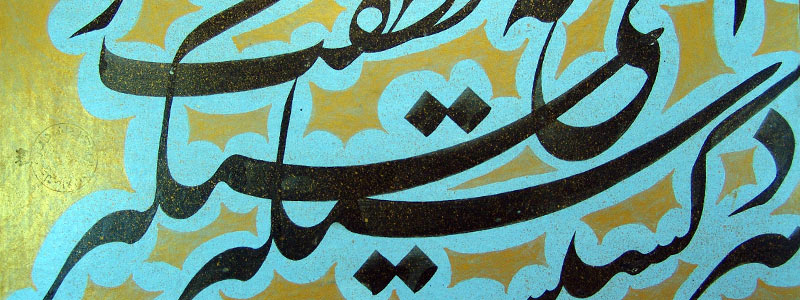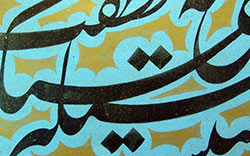Information about Asado’llah Shirāzi is more sparse than one would expect. He collected many precious albums for the Qājār Court, but since the Qājārs departed from the Timurid and Safavid traditions of keeping detailed biographies of court artists, there is no notable biography of Asado’llah. His earliest dated writings are from 1836 CE, when he was the artist of Mohammad Shāh Qājār’s court (r. 1834-1848). Because of this courtly connection, he introduced himself in this early work as the calligrapher of the government of "Zell'ollah A‘zam Mohammad Shāh" (literally, "the Greatest Shadow of God King Mohammad"). The last of his pieces that were included in albums correspond with the earlier part of Nāser-al-Din Shāh’s rule (r. 1848-1896). These include beautiful works of Siyāh Mashq, pieces produced in the style of Mir ‘Emād, a number of books, and a copy of the Qur’an that was written in the Nasta‘liq script in 1851 CE.
Among his most significant contributions to the advancement of the Nasta‘liq script is the role he played in paving the way for later artists such as Gholām Rezā Esfahāni (d. 1886).
Although his exact death date is unknown, the date on the previously mentioned Qur’an indicates that he was still alive in 1851 CE. Shirāzi’s best works are kept in the Golestān Palace Library in Tehran and his works are also found in museum, libraries, and private collections both in Iran and beyond.




